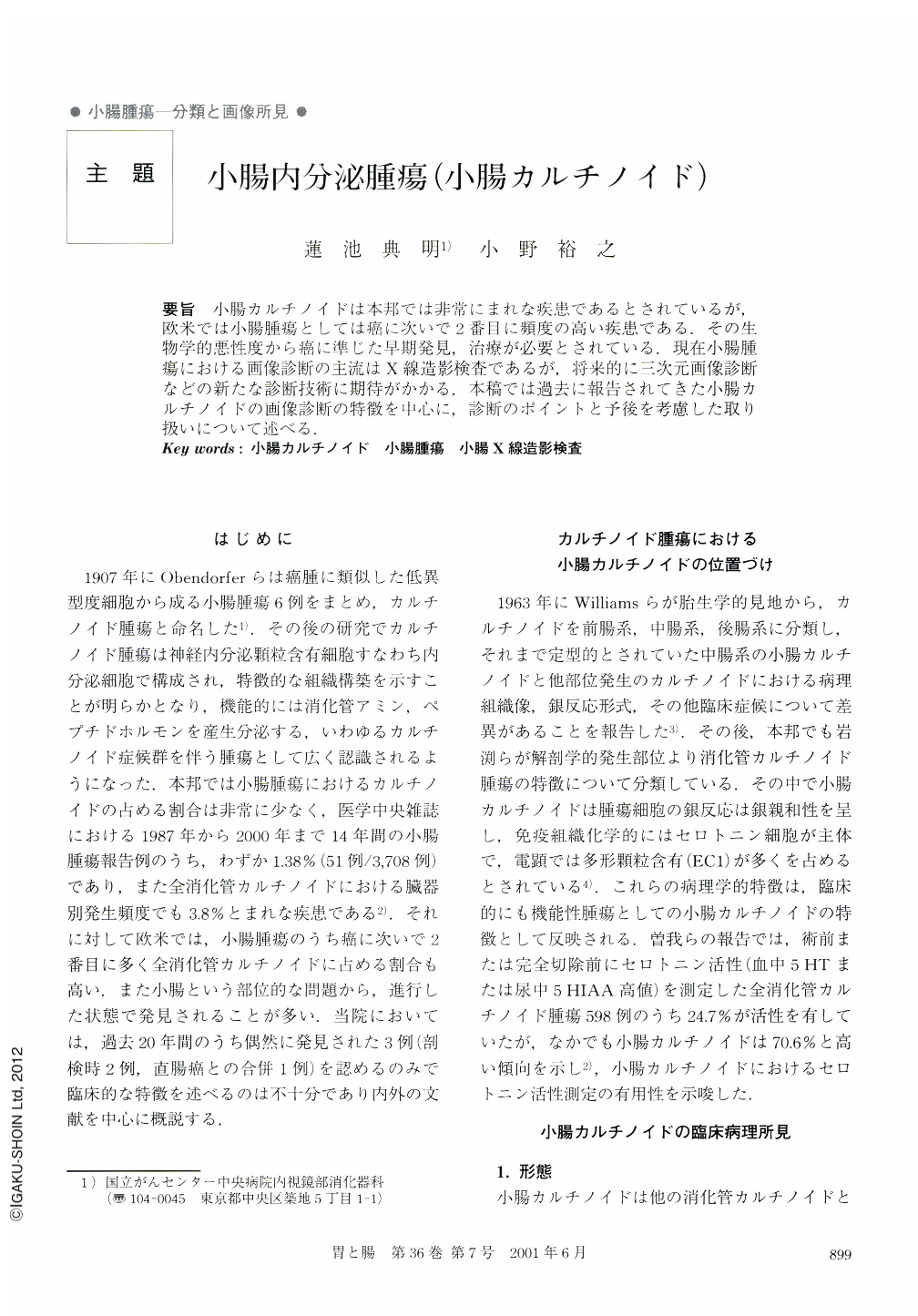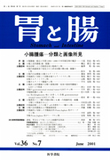Japanese
English
- 有料閲覧
- Abstract 文献概要
- 1ページ目 Look Inside
- サイト内被引用 Cited by
要旨 小腸カルチノイドは本邦では非常にまれな疾患であるとされているが,欧米では小腸腫瘍としては癌に次いで2番目に頻度の高い疾患である.その生物学的悪性度から癌に準じた早期発見,治療が必要とされている.現在小腸腫瘍における画像診断の主流はX線造影検査であるが,将来的に三次元画像診断などの新たな診断技術に期待がかかる.本稿では過去に報告されてきた小腸カルチノイドの画像診断の特徴を中心に,診断のポイントと予後を考慮した取り扱いについて述べる.
Although small bowel carcinoid is a rare disease in Japan, it is the second most common one of all GI carcinoid tumors in western countries. This disease is recognized as a neuroendocrine cell tumor by clinicopathological studies. Small bowel carcinoid is thought to arise from serotonin producing intraepithelial endocrine cells. They are most frequent in the distal ileum. They are often unnoticed and we are discovered after resection of the bowel for symptoms of obstruction, during exploration of the small bowel in search of a primary tumor after distant metastases have occurred and during autopsy. We described specific clinical features of small bowel carcinoid. The standard imaging technique for diagnosis is barium-contrast study. Although we usually try to use endoscopies and other techniques, such as computed tomography (CT) and magnetic resonance imaging (MRI), these methods can only rarely identify the primary tumors. Radiological findings indicate a protruding lesion like a submucosal tumor (SMT) or small polyps. The surface of the tumor is smooth and often has shallow ulceration or erosion. Mesentery extension characteristically appears as a mesenteric mass with an associated satellite pattern of soft tissue stranding that is retractile. Angiographies may also be helpful for diagnosis. The majority of patients with small bowel carcinoid present with metastases to the lymph node or liver. Surgical management of the primary tumor should be wide resection together with complete resection of the supporting mesentery and lymph nodes. In general, carcinoid tumor can be characterized as one of slow or indolent growth. The survival rate for this small bowel carcinoid is 5 years in 65% of cases, but the rate falls to 35% when the tumor is accompanied by metastases.

Copyright © 2001, Igaku-Shoin Ltd. All rights reserved.


